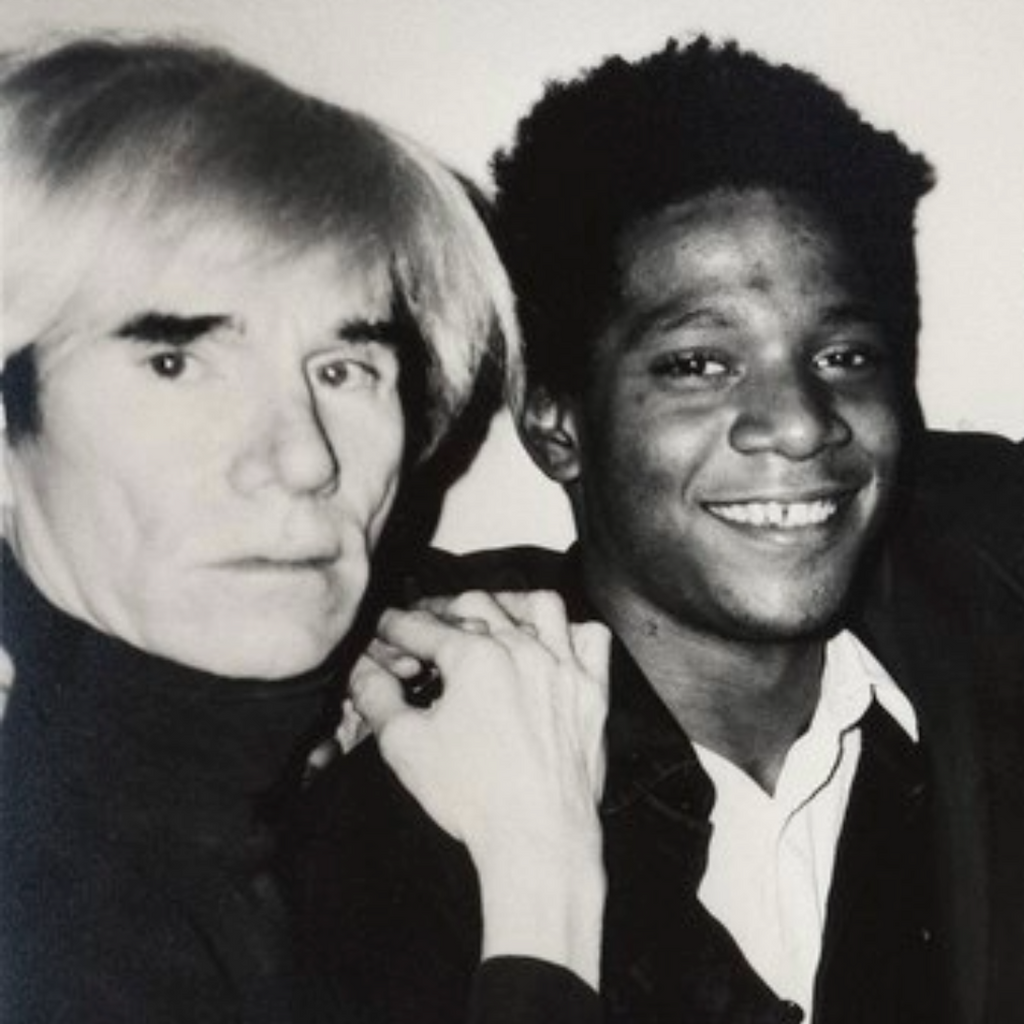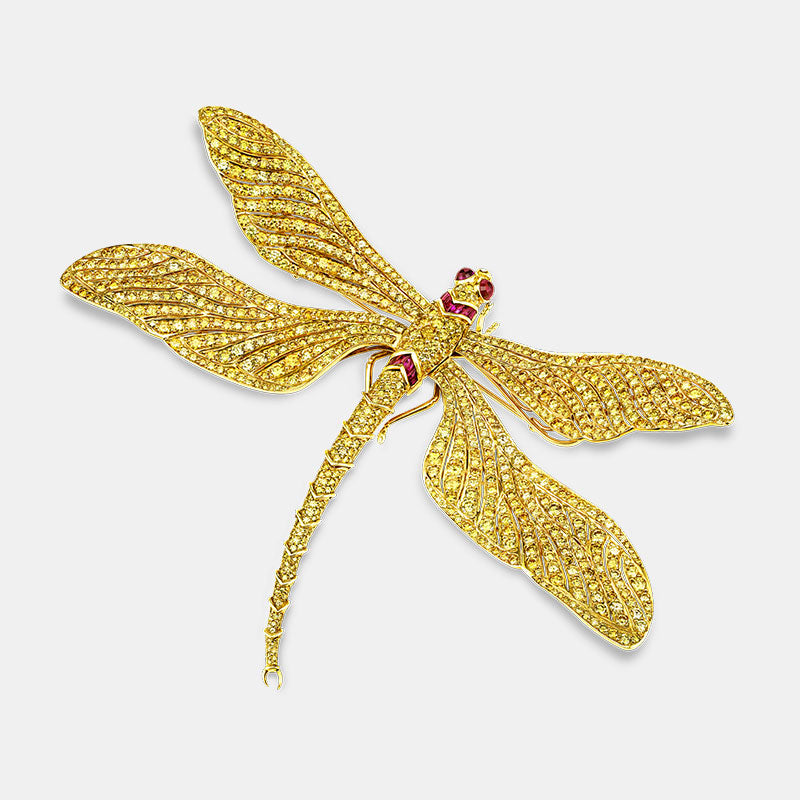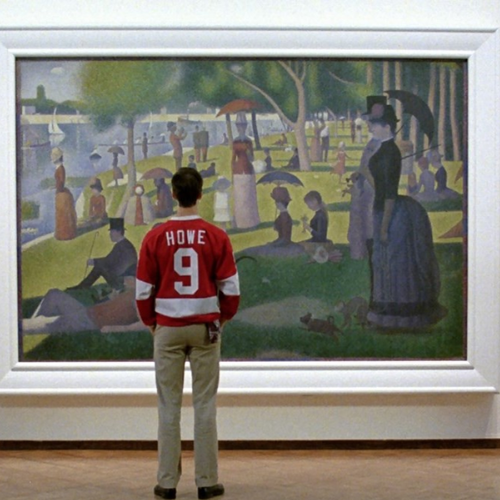– A blog series by Bill Rau –
Here is a painting done by arguably the most famous artist in the entire world. The artist’s name is Winston Churchill.

The Tower of Katoubia Mosque by Sir Winston Churchill. Given by Churchill to President Franklin Delano Roosevelt, this is the only painting Churchill composed during World War II.
Many of you know that Churchill loved to paint, and he was actually quite a good artist. In 1947, he entered a competition at the Royal Academy and submitted the work unsigned. He won the competition.
Now, Churchill typically painted when he was not in government, as when he was in government, he was a leader with tremendous focus and did not make the time to paint. Roughly one-third of Churchill’s paintings were painted before World War II and the remaining two thirds after. During the War, he only painted one work of art and that is this painting. That fact alone would make it very special, but its story is so much more spectacular. Both art historians and antique enthusiasts alike are fascinated with his artwork, not only because of his infamy, but also because of his impressive talent and exceptional attention to detail.
To better understand his great works of art, let's set the historical context of his most famous piece. The British war experience during World War II was vastly different than the American war experience was. Whereas the Americans war experience began with a catastrophe at Pearl Harbor, it was followed up by a couple of neutral battles that were neither wins nor losses, then basically every single major battle after that was a victory.
The British experience was vastly different. It started off with bad news and it continued to get worse and worse. For the first three-plus years of their war, all their news was bad. Some would state that Dunkirk was a victory. It was not a victory. It was tens of thousands of soldiers being saved that otherwise would have been killed or captured. People talk about the UK winning the Battle of Britain. They did not win the Battle of Britain; they put up just enough defense so Germany could not invade them that year. Every major event that happened to Churchill and his fellow Britons was discouraging.
By January 1943, things were finally improving. Churchill and Roosevelt got together in Casablanca for their first war-time conference.

It was during this meeting that even though the British nor the Russians had yet to win a single battle, and the American invasion of Northwest Africa was accomplished with barely a skirmish, they had the guts to state then and there that they would only accept unconditional surrender from their enemies. For Churchill and all of Britain, after three long years, optimism was no longer out of place.
This important wartime conference in Casablanca lasted five days. At the end of the fifth day, Roosevelt turned to Churchill and said, “I need to get home. The American public does not know where I have gone.”
Churchill dismissed this idea because he had one of his own.
He pleaded with Roosevelt. “You need to join me in Marrakesh. To me it is the most beautiful city in the world.”
Roosevelt argued, but Churchill was very persuasive and finally, they agreed to go. The two took the long ride from Casablanca to Marrakesh and the entire way, U.S. soldiers lined the highway, cheering them on.

Late in the afternoon, they went to a tower on the outskirts of Marrakesh, with a panoramic view over the legendary city and the desert around it. Roosevelt’s aides carried him up, and the two great men shared this beautiful view.

As the sun set, they watched the changing colors of the desert reflecting on the city walls. And once it was night, they drank, laughed and they sang songs together. Later, both of them, in separate accounts, described it as their best personal night of the war.
The next morning, Roosevelt had to leave. As he boarded his plane to fly home, Churchill turned to his general, and said “I cannot watch the plane take off. If something were to happen to that great man, I could not live with myself.”
Once Roosevelt departed, Churchill turned to his aide and said, “Bring me my paints.”
He returned to the tower where he and Roosevelt had for one night set their worries aside, and with a sense of optimism he had not felt since the beginning of the war- he painted on canvas this scene:

The Tower of Katoubia Mosque by Sir Winston Churchill. Given by Churchill to President Franklin Delano Roosevelt, this is the only painting Churchill composed during World War II.
He wished to immortalize their evening together. After the artwork was completed, he sent this unique painting as a birthday present to Franklin Roosevelt.
I hope you will agree with me that it is stunning. This is a work of art that really does have it all, phenomenal history, true beauty, a superb story, meaningful subject matter, and about as good as a provenance as one could ever hope. It was created by one of the world’s most famous citizens, the person the British people themselves have voted the greatest Englishman of all time, and it was given as a heartfelt gift to another one of the most important figures in world history. And it was more than a personal gift, it was a gesture of both respect and love.
The Neoclassical Influence: How History Shaped the Arts
Here is a work of art by one of my favorite artists, John William Godward.

By the Blue Ionian Sea by John William Godward
He lived from 1861 to 1922 and is world renowned for his works of art with the amazing quality of his tight brush stroke. Godward was one of three famous British Neo-Classical painters, the others being Frederick, Lord Leighton and Sir Alma Tadema. In my opinion Godward was the most talented of the three.
But what is a British Neo-Classical painter?
During this period, the late 19th and early 20th century, Britain did rule the world, and the sun never set on the British Empire. World commerce - as well as the balance of geo-political power - all centered in London.
However, it is interesting to note that if you asked an average Englishman in the year 1900, what was the greatest civilization of all time, they would not have said themselves. They would almost certainly have said it was ancient Rome. They knew they were living in an important age, but they also recognized that the values of their culture were based upon the classical values of Rome, and they idealized those ancient times as the greatest civilization that there ever was.
So, looking at this painting, we ask- What was the artist trying to accomplish when choosing his subject matter and style? Was he just showing a gorgeous female sunning herself amongst this classic Roman scene? No. He was also selling paintings to people who believed also that Britain was the center of the world, and also to clients who want to justify the correlation between their British Empire and the Ancient Roman Empire. This was a way of almost subliminally justifying Britain’s rule over much of the earth.
But then the world pivoted.

World War One started, and its aftermath changed many people’s opinions on the British Empire. Prior to the Great War, the colonies were in bringing great wealth. Post the Great War, the colonies began to drain the coffers of the Bank of England. Prior to the war, the great majority of Englishman were proud of their colonies. After the war, many came to the realization that both Britain and these colonies could be far better off if they all self-ruled.
The 19th century – in terms of its true cultural identity- was bookended by two wars: it began with the conclusion of the Napoleonic Wars in 1815, and ended in 1918, when the Armistice at Versailles was signed.
Thus, the 20th century culturally truly dawned only when the Great War ended. And in the post World War I world, a new artistic identity stirred, giving rise to the likes of Modigliani, Giocometti, Rene Magritte , and Pablo Picasso, artists that very shattered the ideals that John William Godward believed in.
The art world changed so much that in 1922, just four years after the end of the war, John William Godward became so distraught that he took his own life. In his suicide note, he wrote “the world is not a big enough place for both myself and a Pablo Picasso.”
Picasso
So, we began our series mentioning an artist that a couple of decades ago I did not understand well.
Today I am pleased to say I know and like him a good bit better, and that artist of course, is Pablo Picasso.

Tête d'Homme Barbu V (Head of Bearded Man) Pablo Picasso, dated 1965. Picasso is considered to be the modern art master, but why? In the realm of art, context and perspective is paramount. I learned early in my career that delving into the backstory of art history's most revered artists gives priceless insight into the works they created.
It is important to note that the market rewards artists who are the first to break the mold, from Lucas Cranach having his picture used to help the spread of Protestantism, to Peter Brueghel who was the first to paint the common man doing common things, and of course to Pablo Picasso who broke the molds of art as none have had before him.
Was he the most talented artist of his day? Unequivocally, he was not. On the day that he painted our specific masterpiece, it was just one of nine total paintings that he painted on that single day. Needless to say, when one paints nine paintings a day, one can not put an incredible amount of effort into each of them. However, Picasso’s importance stems from his incredible influence on art, the way after Picasso, everything about our concept of art was different. Unlike many artists, his genius was recognized in his lifetime, and he became highly successful. In fact, despite the fact that he was a known Communist, he became the wealthiest man, in the entire country of France.
So, our Picasso is quite special, not because it is beautiful, which it is, and not because it is Cubist, which it is, and not just because it is Picasso, because really all Picassos are special, but because the message he was sending us with this extraordinary work of art. Our painting was painted on April 4th, 1965. For basically the two previous decades before this exact date, Pablo exclusively painted women, but on this exact date of April 4th, 1965 he decided he wanted to paint a man.
But he did not just want any man: he wanted to paint a philosopher. At this stage, Picasso was 83 years old and he knew he was near the end on his life. In a sense, this was a portrait of himself as the philosopher. He was trying to artistically place himself in the context of art history. I love the work not only because it is beautiful, but because in its own way, this painting shows us a glimpse of the great artist’s inner wishes.







